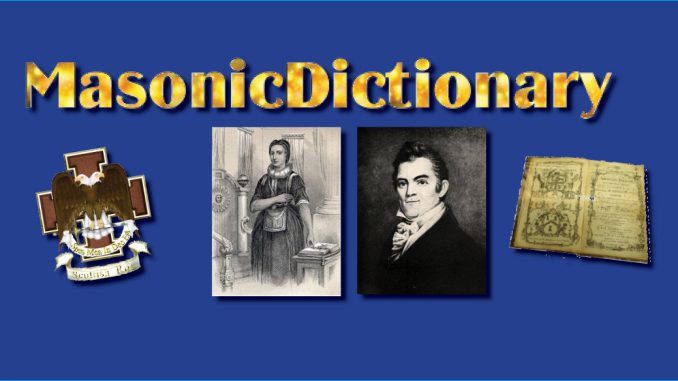
By Bro. A.B. Leamer, Iowa
The Altar has always had a conspicuous place in the religious life of the peoples of all ages. The Ark was the Altar that the Children of Israel carried with them on their nomadic wanderings. Heathen, Hebrew and Christian alike have made much of the Altars erected to their gods and it has ever been the shrine toward which religious people have turned their faces and offered their prayers when in the act of worship; and upon it they have offered up their oblation of praise and sacrifice.
The earliest altars were built of unhewn stone, the idea prevailing that to use a hammer upon them would pollute them; therefore in building their altars to Deity the ancients threw up an altar of crude stone and upon this they placed their offerings of incense and sacrifice.
The Altar was also a place of refuge. Upon each corner of the altar was a horn and any one fleeing from the wrath of his enemies would run and lay hold on one of these horns knowing that he would be saved from destruction at the hands of the pursuers, and would receive justice at the hands of those whose duty it was to deal out justice. In early religious services it was the custom of the priests and the people to move about the Altar as the sun passes about in his orbit, rising in the East, passing to the South by way of the West, and as they passed they sang their songs of praise, chanted their psalms and poured forth their peons of thanksgiving to the deity that they worshipped; thus it is with Masonry, we pass from youth to our meridian glory into the mellowing twilight to meet our God at His Altar.
The center of all our religious life and thought, and of all our ceremonial life and thought, is the altar. In all of these rites, whether they be religious, ceremonial or fraternal, the altar has ever held the central place; thus it becomes the place where Jehovah dwells, from beneath which flow the waters of life for the strengthening of the nations and the comfort of men. It is, then, more than simply a table upon which we place the sacred writings, or the Holy Bible; it is a sacred place, about which is gathered all the life and teachings contained in the ceremonies.
Thus should the Altar impress us with its sacredness and cause our minds to dwell upon the Creator of the universe, and it should also lead the contemplative Mason to view the ceremonies in which he engages with seriousness and reverence.
The old altar was one for the burning of incense and the offering of sacrifice. The new altar is one of devotion and sacrifice upon which we place the living sacrifice of our lives, not to be burned, but to be consumed by service to God and man. Hereon the candidate should lay his passions and his vices as an oblation to Deity, while he offers up the thoughts and devotions of a pure heart as a fitting incense to the Grand Architect of the soul.
The Altar is the holy place in our great Masonic institution. We should therefore look upon it in its true meaning, and when we see it standing in the center of the Lodge, with the Holy Bible thereon bearing our great jewels, our minds ought instinctively turn to a contemplation of God and His mercy, and we should be truer and better men and Masons, and more loyal Sons of God.
-Source: The Builder September 1916
